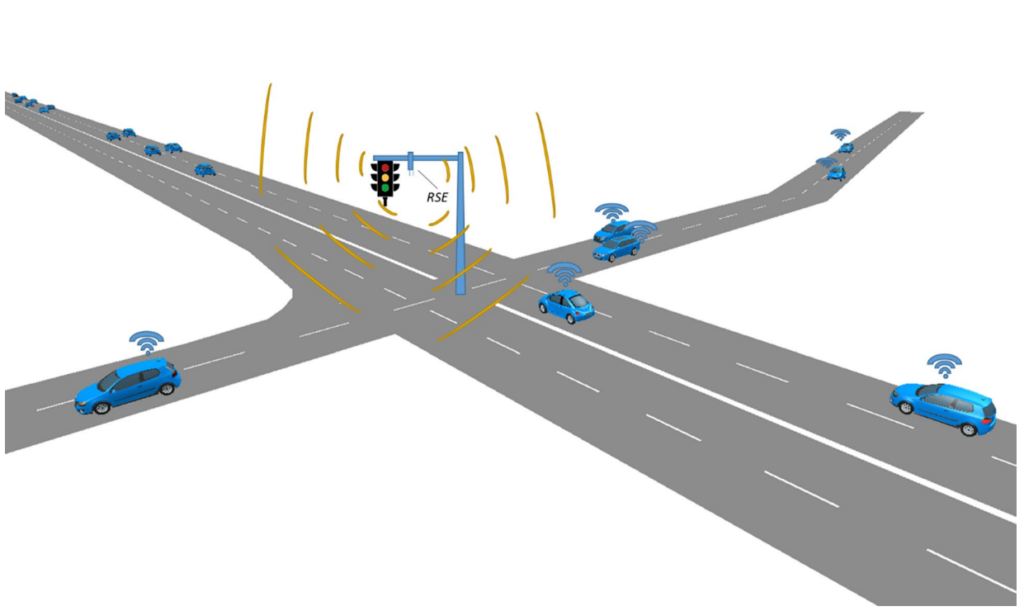Winter driving presents serious dangers, as icy and snowy conditions greatly heighten the likelihood of accidents. Each year, slippery roads contribute to numerous weather-related collisions. Over 70% of U.S. roads are situated in areas that receive more than 5 inches of snowfall annually, impacting nearly 70% of the American populace. This winter weather severely reduces pavement friction and vehicle control, leading to slower speeds, diminished roadway capacity, and a greater potential for accidents. For instance, average speeds on major roads may drop by 30 to 40%, while freeways could see reductions between 5 and 40% in snowy conditions. As a result, 24% of weather-related vehicle crashes occur on icy or snowy roads, causing over 1,300 deaths and 116,800 injuries each year. To tackle these issues, the U.S. Department of Transportation dedicates approximately 20% of its maintenance funds to winter road upkeep. Nonetheless, effectively monitoring and forecasting slippery conditions continues to be a challenge.
Conventional road monitoring techniques, including weather forecasts and road sensors, often fall short in providing real-time accuracy. However, the advent of artificial intelligence (AI) and connected vehicle (CV) technology is revolutionizing the detection and management of road slipperiness. This article examines a study by researchers at Case Western Reserve University in Cleveland, USA, focusing on pavement icing detection. The research investigates the use of deep learning models, especially Long Short-Term Memory (LSTM) networks, to classify pavement conditions using real-time vehicle data, with the goal of significantly decreasing winter road accidents. Connected vehicle technology facilitates real-time data exchange between vehicles and infrastructure (V2I), as well as between vehicles themselves (V2V). This enables a vast and evolving dataset for AI models to analyze and categorize pavement conditions. Each connected vehicle sends crucial information, including speed, acceleration, tyre traction, and temperature. With this data, AI models can identify road slipperiness and promptly warn drivers, empowering them to modify their driving habits and avert accidents. These predicted conditions are transmitted to vehicles via DSRC or 5G technology to promote safer driving.

The study categorizes pavement surfaces into three distinct types based on their friction coefficients: dry, snowy, and icy. Among these, dry surfaces exhibit the least slipperiness, whereas icy surfaces demonstrate the highest degree of slipperiness. The process of slippery detection can be effectively framed as a classification problem, which is well-suited for deep learning methodologies. Statistical data derived from numerous road surveys provide detailed ranges for friction coefficients associated with various surface conditions: dry surfaces exhibit coefficients ranging from 0.85 to 1, snowy surfaces range from 0.2 to 0.3, and icy surfaces range from 0.05 to 0.2. These coefficients have significant implications for driving safety and inform the corresponding preventive measures applicable to different pavement conditions.
The preparation process for the dataset intended for slippery detection comprises several crucial steps. Initially, the data is standardized to achieve a mean of 0 and a standard deviation of 1. After that, the dataset is divided into 1-second frames, which aligns with the 10 Hz sampling rate, resulting in 10 data points for each frame. Subsequently, each sequence is tagged based on pavement conditions, classifying them as either dry, snowy, or icy. To address potential class imbalance, methods like under-sampling and over-sampling are implemented, ensuring each category contains 282,197 sequences. In the end, the balanced dataset is divided into an 80% training set and a 20% validation set, employing stratified sampling to preserve the class distribution. The training set is used to train the LSTM model, while the validation set is allocated for hyperparameter optimization.
In deep learning, hyperparameters play a crucial role in determining model performance and must be selected with care before training begins. Important hyperparameters include the number of LSTM layers, LSTM cells, neurons per cell, learning rate, loss function, batch size, and dropout ratio. For this study, the number of LSTM cells is fixed at 10, corresponding to a sampling rate of 10 Hz. The cosine annealing learning rate technique is applied, starting at an initial learning rate of 0.01, permitting larger initial adjustments followed by gradual fine-tuning. The cross-entropy loss function is employed for classification tasks. The other hyperparameters are refined using Bayesian optimization. The optimal settings for the LSTM layers, neurons, dropout rate, and batch size are 4, 256, 0.1, and 256, respectively. The optimization outcomes are justifiable, as deeper (more layers) and wider (more neurons) architectures generally enhance the ability to capture intricate features in sequences, resulting in superior performance.
The simulations were performed utilising the VISSIM traffic modelling software, which demonstrated that the LSTM model exhibits remarkable accuracy in detecting a range of pavement conditions. Specifically, the model achieved 100% accuracy for dry pavement, 99.06% for snowy conditions, and 98.02% for icy pavement. Upon identifying a hazardous road condition, the AI model activates a warning system that disseminates alerts to nearby connected vehicles (CVs).
Additionally, the study investigated the influence of these warnings on driver behaviour. It was observed that vehicles that adjusted their speed and maintained a greater following distance after receiving an alert experienced a significantly reduced number of near-collision events compared to those that did not receive any alerts. Key findings from the simulation data indicated that safety indicators such as time-to-collision (TTC), modified time-to-collision (MTTC), and deceleration rate to avoid a crash (DRAC) improved by 30-77% for connected vehicles in contrast to their non-connected counterparts. Furthermore, potential accident rates decreased by over 90% when drivers adhered to the recommended safety measures following an alert.
The integration of AI and connected vehicle technology is revolutionizing winter road safety. Utilizing real-time data and sophisticated machine learning methods, we can develop a proactive system that detects and helps prevent accidents on icy and snowy roads. As these technologies advance, we approach a future with enhanced road safety, making winter driving safer for all.
Reference
Hu, J., Huang, MC. & Yu, X.B. Deep learning based on connected vehicles for icing pavement detection. AI Civ. Eng. 2, 1 (2023). https://doi.org/10.1007/s43503-023-00010-6
Pisano, P. A., Goodwin, L. C. & Rossetti, M. A. (2008). US highway crashes in adverse road weather conditions. 24th Conference on International Interactive Information and Processing Systems for Meteorology, Oceanography and Hydrology, New Orleans, LA.
Lu, N., Cheng, N., Zhang, N., Shen, X., & Mark, J. W. (2014). Connected vehicles: Solutions and challenges. IEEE Internet of Things Journal, 1(4), 289–299.10.1109/JIOT.2014.2327587
Standard, S. S. V. (2009). Dedicated Short Range Communications (DSRC) Message Set Dictionary. SAE International, November.

